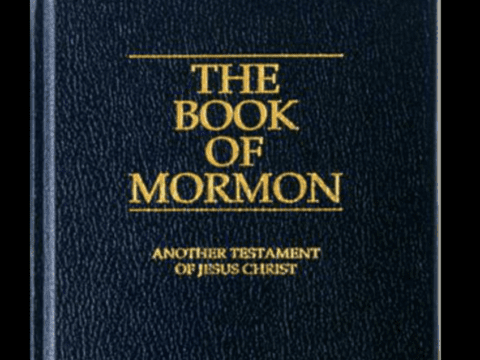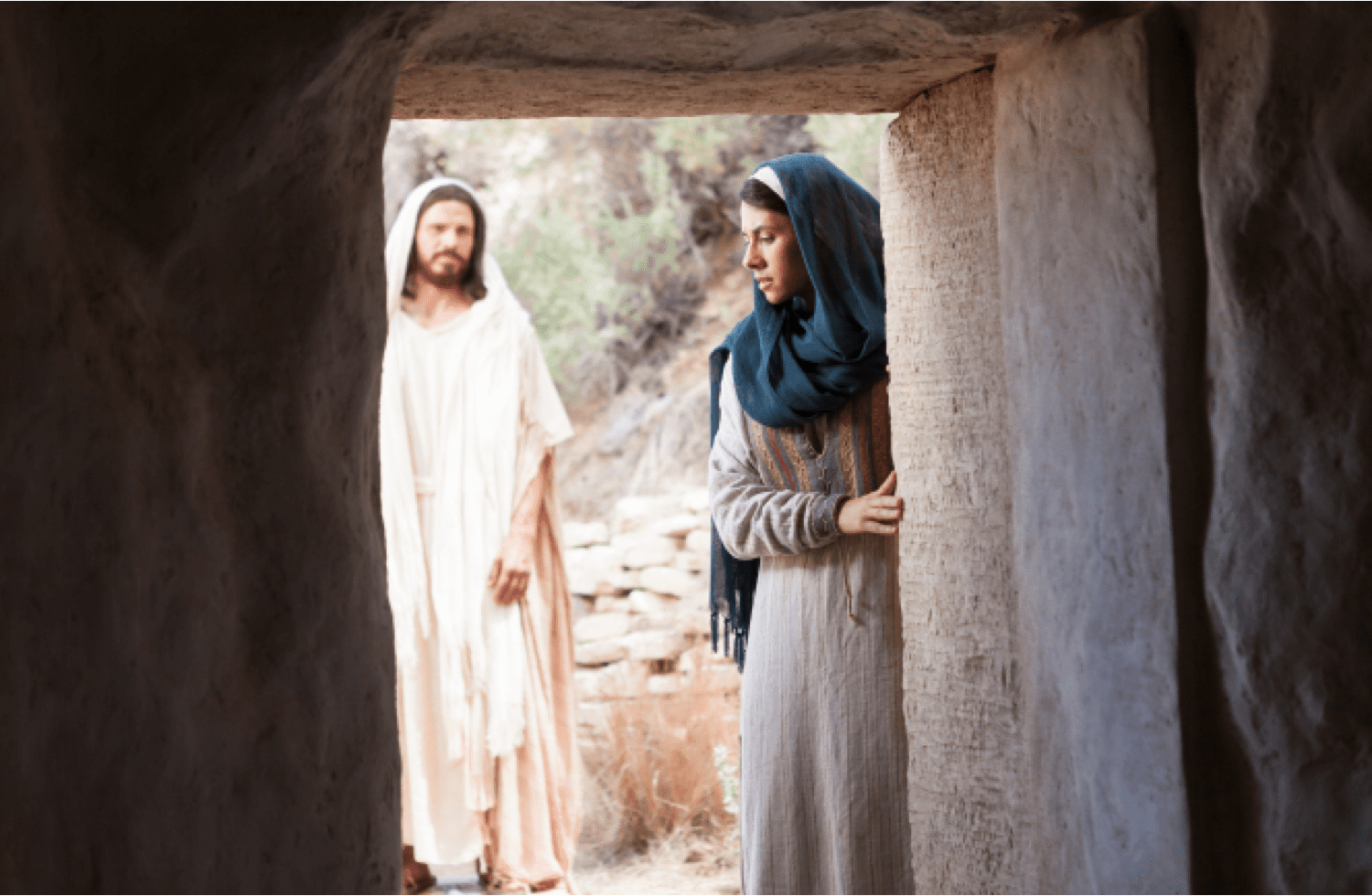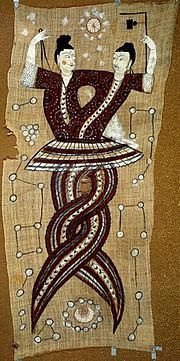Robert F. Smith’s chapter, “Textual Criticism of the Book of Mormon” is one of many interesting sections in the book Reexploring the Book of Mormon by John W. Welch. Detailed analysis of the text in the Book of Mormon can yield subtle insights and occasional gems that can strengthen our appreciation of this remarkable book. Here is an excerpt from his contribution with some tidbits from textual analysis:
Although the Book of Mormon generally agrees with the King James Version (KJV) of the Bible both in its acceptable scriptural idiom of translation and in its direct quotations from Isaiah, Joseph Smith’s translation of the Isaiah texts in the Book of Mormon sometimes differs. At 2 Nephi 20:29, for example, Joseph dictated Ramath instead of the usual “Ramah” of the parallel King James Isaiah 10:29. Indeed, there is no “t” in the Hebrew text, the Greek Septuagint, or even in the Syropalestinian Aramaic version. The “t” appears, however, in the later Jewish Aramaic translation known as Targum Pseudo-Jonathan, as well as in the Christian Syriac Peshitta version. The words there are Ramata and Rameta, respectively (as is also evident in the Old Syriac Rametha for New Testament Arimathea in Matthew 27:57). Neither source was available to Joseph.
Another difference from the KJV came when Joseph was dictating from Isaiah 48:11 in 1 Nephi 20:11. Among other things, Joseph added an “it” that does not appear in the Greek or Hebrew texts. However, the “it” is in one Syriac manuscript, in one Jewish Aramaic Targum manuscript, and in a scribal correction to the large Isaiah Scroll from Qumran Cave One (the latter being the earliest Hebrew text of Isaiah).
King James “Ariel,” a poetic term for Jerusalem, is not to be found in the 2 Nephi 27:3 quotation of Isaiah 29:7. However, it is also absent from the Jewish Aramaic Targum—which replaces it with “the City.” The Book of Mormon reads Zion instead. This fits well, however, since “Mount Zion” appears at the end of the verse (Isaiah 29:8), and “Zion” and “Mount Zion” parallel each other here….
At 1 Nephi 7:11, the Original and Printer’s Manuscripts of the Book of Mormon, as well as the 1830 edition of the Book of Mormon, all use the word how, which was changed in the 1837 and all subsequent editions to read what. However, even the King James translators could not decide, in translating a closely similar phrase in 1 Samuel 12:24, whether how or what was a more accurate translation of the Hebrew relative particle ‘asher. They thus placed the one in the text and the other in the margin (the reasons for marginal readings are explained at length in the introduction to their 1611 edition of the King James Version). Exactly the same variant readings occur in the texts we have of the Title Page of the Book of Mormon.
There is an interesting confusion between things and words at 2 Nephi 6:8 and 33:4. While the Printer’s Manuscript reads things at both locations, all editions (except the 1830 at 2 Nephi 33:4) have changed this to read words. Either variant is a good reading, and the Hebrew word debarim is accurately translated either “things” or “words.”
The 1981 edition of the Book of Mormon has returned for the first time to the reading of the Printer’s Manuscript father (singular) at Jacob 3:5, which of course refers directly to Lehi in the preceding Jacob 2:27, 34. The plural form fathers, which had been mistakenly used in all editions since 1830, suggested that Jacob attributed a restriction on plural marriage to earlier Israelite fathers, whereas historical evidence of any such legal restriction before Lehi is lacking.
These, and many other examples, show the significant and interesting things that textual criticism can teach us about the words of the Book of Mormon.
Since Isaiah 29 and 2 Nephi 27 were mentioned above, let me point out that critics sometimes have argued that Nephi’s many additions to Isaiah 29 in 2 Nephi 27 (or more broadly, in 2 Nephi 26 and 27) is unscriptural, contrary to Jewish tradition, a case of obvious forgery by Joseph Smith, etc. In reality, it is a good example of a Jewish prophet and teacher of the Jewish scriptures showing how a man of God applies scriptures prophetically, showing us how to “like them unto us.” Grant Hardy pointed out that Nephi’s complex combination of his own words with those of Isaiah could be viewed as akin to the rabbinical “midrash.” No, this is not something that comes from wearing your belt too tight. It’s related to the Jewish tradition of providing commentary and interpretation of scripture. Grant Hardy explains in his short essay “2 Nephi 26 and 27 as Midrash” and more fully in his chapter of the magnificent book, Reading Nephi Reading Isaiah: Reading 2 Nephi 26–27, edited by Joseph M. Spencer and Jenny Webb (Salem, Oregon: Salt Press, 2011). Yes, what Nephi does with Isaiah 29 is so interesting and instructive, and so related to Book of Mormon themes and to other parts of the text, that there is an entire book written on this topic with some essays definitely worth pondering. I hope you’ll enjoy it and come away with a better feel for who Nephi was and how he approached scripture as a reader, an expositor, and a prophet.
So who was Nephi, or rather, who wrote the text of First and Second Nephi? I’ll offer a view based on my study of his writings: he wasn’t a 19th century farmboy, nor a 19th century scholar, nor a 19th century expert in the Bible. He was a prophet of God from a troubled family in ancient Jerusalem where he suffered years of abuse from his brothers and struggled all his life with the anger and frustration this caused. He was a brave man who endured a difficult trek through the Arabian Peninsula where he described directions and locations that make sense 2600 years later. He crossed the ocean and took part in leading and teaching people in an incredible adventure in the New World. Most important of all, he was a prophet of God who communed with angels, had visions, and even saw the future Messiah and stood as a witness for the Savior, Jesus Christ, leaving us his sacred writings and commentary to help being us unto Christ.
Other resources to consider related to 2 Nephi 26-27:
- John Tvedtnes, Isaiah Variants in the Book of Mormon
- “The Bible and the Book of Mormon” by Alma Allred
- “The ‘Isaiah Problem’ in the Book of Mormon” by Dr. Sidney B. Sperry (from 1967, but still has valuable material to consider)












"He was a prophet of God from a troubled family in ancient Jerusalem where he suffered years of abuse from his brothers and struggled all his life with the anger and frustration this caused."
Well said. I find it interesting and rather ironic for one such as Nephi that the center piece of his writings is the interpretation of his father's dream — and the centerpiece of the dream is the Tree of Life which, as it turns out, represents the love of God. It's as if his whole ordeal underscored his weaknesses which would ultimately be overcome only by embracing God's love. It's the stuff of which great stories are made.
Moreover, Nephi's writings are the perfect set up for the entire Book of Mormon — a saga which tells the tales of entire civilizations coming to an abrupt end because of the antithesis of God's love.
Jack
This is great stuff thanks for the links. I really like Grant Hardy's way of approaching the BOM but his position on deutero Isaiah never made sense to me. It was also great to read Sperry's take on the Isaiah problem in the BOM.
"Another difference from the KJV came when Joseph was dictating from Isaiah 48:11 in 1 Nephi 20:11. Among other things, Joseph added an "it" that does not appear in the Greek or Hebrew texts"
This should be the other way around. Isaiah contains the "it" in the KJV version. There is no "it" in 1 Nephi 20:11, he uses "this" in place of "it".
I feel like I'm missing something here, I don't see why he'd make this statement and make that error.
Am I missing something?
(previous post was me, accidentally pressed enter early)
Robert F. Smith's argument is hopelessly confused. After noting correctly that "Textual criticism seeks to render intelligent, scholarly judgment as to the most accurate and original form of a given text," he unloads a bunch of meaningless verbiage that sounds vaguely like textual criticism but is really nothing of the sort.
The confusion starts with the fact that Smith never clarifies which original form of the BoM text he hopes to render a scholarly judgement on. When it comes to Isaiah, he has several ancient versions (several in the ancient languages and one early-modern, translated English versions) to work with. When it comes to the BoM, all he has to work with are a couple of variants of the (supposedly) translated 19th-century English text, but of course no ancient, untranslated text in the original language. (Darn, if only those gold plates had not been spirited away!)
One can certainly do legitimate textual criticism of the BoM under these circumstances, but the goal could only legitimately be a better understanding "as to the most accurate and original form" of the 19th-century text.
Perhaps the single most important question for the textual critic of the BoM would be whether that 19th-century text is a creation of the 19th century or a translation of an earlier text. Robert F. Smith and FARMS have an obvious investment in the latter conclusion, and what better way to ensure that conclusion than to simply assume it at the get-go? This is precisely what Smith does when he writes things like this:
Although the Book of Mormon generally agrees with the King James Version (KJV) of the Bible both in its acceptable scriptural idiom of *translation* and in its direct quotations from Isaiah, Joseph Smith's *translation* of the Isaiah texts in the Book of Mormon sometimes differs.
Blatant circular reasoning. Jeff, there's a very good reason that the work of FARMS, when it is not politely ridiculed, is simply ignored by secular scholars (and many LDS scholars as well). The reason is not anti-Mormon prejudice; it's the fact that the work of FARMS is so laughably tendentioous and so obviously geared only to those who already believe. In this particular case it's not textual criticism, just more apologetics, offered up in the style of textual criticism.
— Eveningsun
I think you judge FARMS in a way that you probably don’t judge other fields of study. Let’s take Abiogenesis for example. The entire field of study is based on a hypothesis that can’t be proven at this time, and it is controversial for obvious reasons. That doesn’t mean that the research on it is necessarily circular or unsound (although it can be of course just like FARMS research can be, and when it is it should be pointed out) Most scientists devoted to abiogenisis research likely feel strongly that life came about through natural means and their research starts with this assumption. As long as the assumption is understood by all involved, there is nothing intellectually dishonest about this field of study.
Likewise,Farms isn’t usually trying to answer the question of, “ Is the BOM true?” They state this already as their underlying assumption. They are trying to answer questions about what the original language was really like. Where might these people have lived? Etc. Just like Abiogenisis research is used in naturalist apologetics, FARMS research is used in Mormon apologetics. But I think both are legitimate honest fields of study separate and apart from apologetics. I’m not saying that FARMS always has great arguments, but I think it’s odd that you would dismiss the entire field of study as being circular simply because it is based on refining a particular hypothesis. Mormography pointed out an error in Smith’s presentation of his research, and I think that should be looked at critically, but the fact that he starts with a hypothesis faithful to the BOM isn’t a problem at all as I see it.
*I meant openminded, not mormography
I think you judge FARMS in a way that you probably don’t judge other fields of study. Let’s take Abiogenesis for example. The entire field of study is based on a hypothesis that can’t be proven at this time….
Actually, there are several competing hypotheses regarding abiogenesis, and to a great extent research in the field is about which of those hypotheses best fits the evidence. (In addition, abiogenesis competes with panspermia and other theories of exogenesis.) Presumably the evidence will eventually settle the questions involved here, because no scientist is committed to any particular outcome in the same way that the FARMerS are committed to their preferred outcome.
There are also several hypotheses regarding the origins of the Mormon scriptures, but FARMS is not at all about honestly determining which of those hypotheses best fits the evidence. If it were, it would long ago have accepted the theory of 19th-century origins. But it can't do that; for doctrinal reasons it is committed to contesting that hypothesis no matter what the evidence might indicate. You and I both know this to be true. Why keep pretending otherwise?
— Eveningsun
Of course there are different hypotheses in the study of Abiogenisis. There are different hypotheses that FARMS researchers propose too about various aspects of the Book of Mormon. However, Abiogenisis is by definition the study of how biological life could arise from inorganic matter through natural processes. It excludes any any theory that would involve a creator of any kind and if they run into something that suggests a creator, they will look deeper and attempt to find a way around it.
Likewise FARMS excludes any theory that supposes the BOM was authored by JS or someone else in his day.
All research and science starts with basic assumptions. Abiogenisis, and the type of Mormon studies that FARMS focuses on both start with controversial assumptions that haven’t been proven, but they both CAN (not that they always do) produce rational scholarly research.
The point is that abiogenesis is science. It calls itself science, and it is science. The work done by FARMs is apologetics. My objection is to Robert F. Smith's doing apologetics and calling it textual criticism. It's dishonest in the same way "creation science" is dishonest, because it undeservingly tries to claim for itself the authority of a secular mode of inquiry that is respected by those outside the Church.
— Eveningsun
@ Openminded:
I have the same question as you about the 1Ne 20:11 comment. It's a stupid mistake and makes me wonder about some of the other assertions by the textual critic.
Additionally, what does a textual "critic" have to say about how Nephi came to quote Deutero-Isaiah, a work which occurred long after he left Jerusalem?
I believe the only one I want to see is The Book Of Mormon! I am waiting for his discount tickets for that one!I have been going to Broadway since I was 13. LOVE IT!